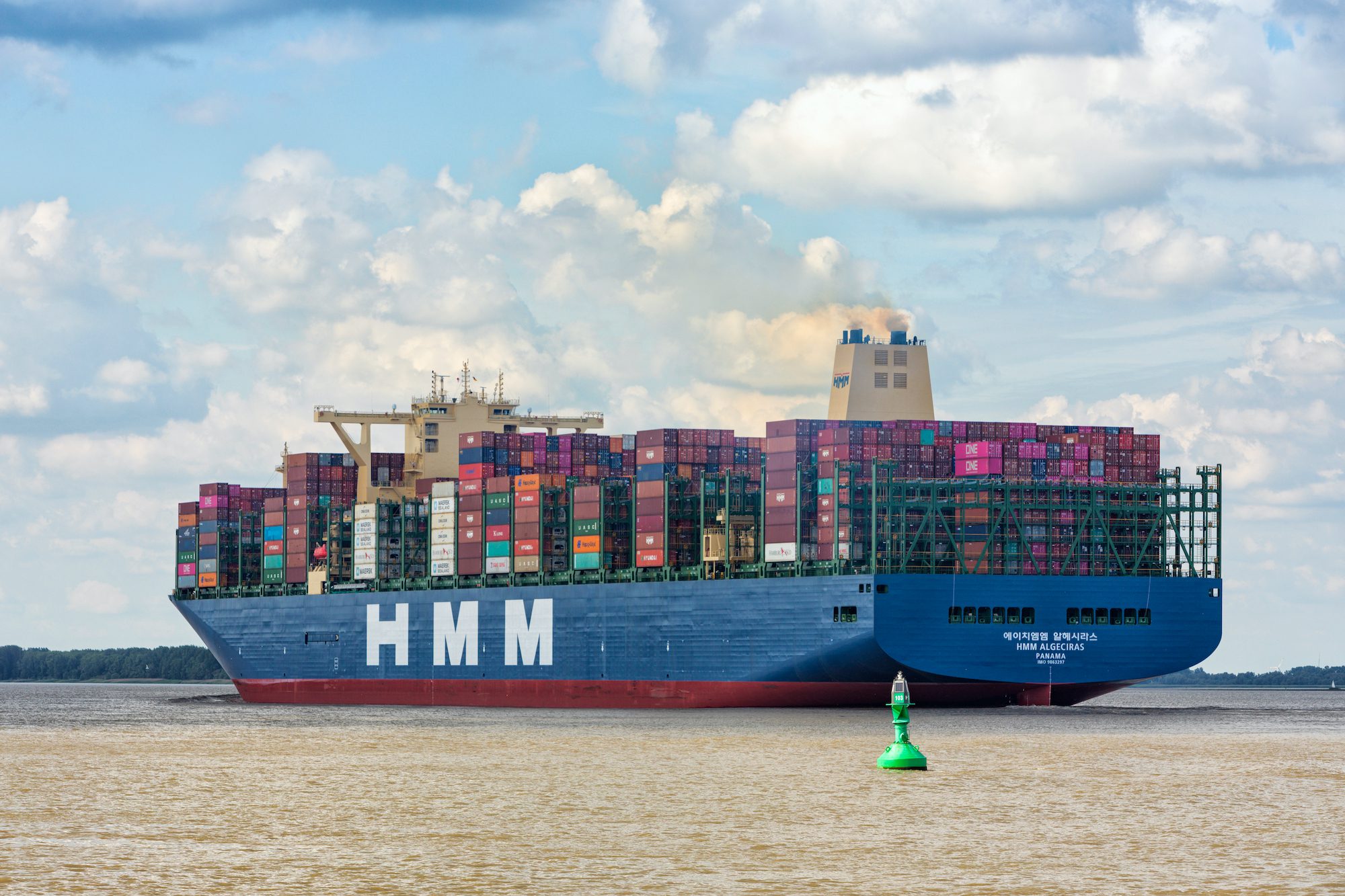U.S. Customs Revenue Tops $100 Billion for First Time Amid Tariff Surge
US revenue from customs duties this fiscal year surpassed $100 billion for the first time, reflecting higher tariffs imposed by the Trump administration.

By Mike Wackett (The Loadstar) –
South Korea’s national flagship carrier, HMM, reported a net profit of $2.24bn in the second quarter, for a $4.62bn half-year result – but is decidedly pessimistic on the outlook.
Similarly, last week, Maersk said it expected “a progressive decline” from the fourth quarter, and ONE has so far declined to forecast earnings for its full year, ending on 31 March, due to “market uncertainties”.
Nevertheless, with a very profitable third quarter now guaranteed for the sector, John McCown, founder of New York-based analyst Blue Alpha Capital, has raised his 2022 ocean carrier cumulative earnings forecast by $36bn, to a massive $256bn.
However, it looks more and more likely that the liner boom has reached its peak and earnings next year will come under considerable pressure.
“Demand growth is expected to be under downward pressure due to considerable uncertainties mainly related to widespread inflation, rising oil prices and recurrent Covid outbreaks, in addition to geopolitical tensions,” said HMM.
The carrier’s revenue surged 73% in Q2, compared with Q2 21, to $3.84bn, and edged up 2.3% on Q1 turnover as its spot market business began to cool.
HMM does not reveal its liftings and its average rate per teu cannot be calculated, but The Alliance partner ONE reported a 5% decline in its volumes for the same period, so, based on the financial information disclosed, HMM’s average rates would appear to have increased during the period.
Whereas, Maersk said it expected to have around 70% of its main haul business under contract by the end of the year, HMM is known to be less reliant on large volume contracts with BCOs and more focused on small-to-medium-sized shippers for its volume.
Despite its pessimism over demand, HMM will no doubt hope its reading of the global supply chain “to remain strained in the coming months” will keep spot and shorter-term contract rates elevated for the next few quarters.
“Port congestion in major locations is still pervasive. In particular, growing concern about the logistics situation in North Europe is an important factor that will impact the supply chain,” said HMM.
Formerly known as Hyundai Merchant Marine, the carrier returned to the black in Q3 20 after 21 consecutive quarters of losses.
It posted a $4.4bn profit for 2021 and last month, its new CEO, Kim Kyung-bae, announced an ambitious growth programme that will see the carrier invest $11.3bn over the next five years to expand its containership and dry bulk ship fleet.
HMM is ranked as the eighth-biggest carrier, with a fleet of 76 vessels and a capacity of some 800,000 teu, which is around 130,000 teu more than its The Alliance partner Yang Ming, in ninth position. Moreover, it has an orderbook of 184,000 teu, compared with the Taiwanese carrier’s 24,000 teu.
In November, a Korean government minister said it had begun a search for a buyer for the 45% combined stake in the carrier held by the state-owned Korea Development Bank and Korea Ocean Business Corp, but those plans appear to have been put on the back burner.
The Loadstar is known at the highest levels of logistics and supply chain management as one of the best sources of influential analysis and commentary.
Sign up for gCaptain’s newsletter and never miss an update

Subscribe to gCaptain Daily and stay informed with the latest global maritime and offshore news


Stay informed with the latest maritime and offshore news, delivered daily straight to your inbox
Essential news coupled with the finest maritime content sourced from across the globe.
Sign Up